|
#1
| |||
| |||
|
I am third Year student of Electronics and Telecommunication Engineering and want to prepare myself for IES-Electronics and Telecommunication Engineering Exam so please provide me syllabus for same???
|
|
#2
| |||
| |||
|
As you want to prepare yourself for IES-Electronics and Telecommunication Engineering Exam so here I am suggesting you some of the best books for preparation as well as providing you the detailed syllabus Books for IES Electronic and Telecommunications Engineering- Network Analysis: Van Valkenburg Network and Systems: D. Roy Choudhary Signals and System: Oppehum, Willsky & Nacob Automatic Control System: Benjamin C. Kuo Control System Engineering: Nagrath & Gopal Principle of Communication System: Taub & Schilling Communication System: A. Bruu Carlson Electromagnetic Waves & Radiating Systems: Jardon & Balmain, JD Kraus Integrated Electronics: Jacob Milman & C. Halkias, Millman & Grabel Integrated Circuits: K.R. Botkar Op. Amps & Linear Integrated Circuit: Gayakwad Digital Logic & Computer Design: Moris Mano Syllabus for IES-Electronics and Telecommunication Engineering Paper I 1. MATERIALS AND COMPONENTS Structure and properties of Electrical Engineering materials; Conductors, Semiconductors and Insulators, magnetic, Ferroelectric, Piezoelectric, Ceramic, Optical and Super-conducting materials. Passive components and characteristics Resistors, Capacitors and Inductors; Ferrites, Quartz crystal Ceramic resonators, Electromagnetic and Electromechanical components. 2. PHYSICAL ELECTRONICS, ELECTRON DEVICES AND ICs Electrons and holes in semiconductors, Carrier Statistics, Mechanism of current flow in a semiconductor, Hall effect; Junction theory; Different types of diodes and their characteristics; Bipolar Junction transistor; Field effect transistors; Power switching devices like SCRs, GTOs, power MOSFETS; Basics of ICs - bipolar, MOS and CMOS types; basic of Opto Electronics. 3. SIGNALS AND SYSTEMS Classification of signals and systems: System modelling in terms of differential and difference equations; State variable representation; Fourier series; Fourier transforms and their application to system analysis; Laplace transforms and their application to system analysis; Convolution and superposition integrals and their applications; Z-transforms and their applications to the analysis and characterisation of discrete time systems; Random signals and probability, Correlation functions; Spectral density; Response of linear system to random inputs. 4. NETWORK THEORY Network analysis techniques; Network theorems, transient response, steady state sinusoidal response; Network graphs and their applications in network analysis; Tellegen’s theorem. Two port networks; Z, Y, h and transmission parameters. Combination of two ports, analysis of common two ports. Network functions : parts of network functions, obtaining a network function from a given part. Transmission criteria : delay and rise time, Elmore’s and other definitions effect of cascading. Elements of network synthesis. 5. ELECTROMAGNETIC THEORY Analysis of electrostatic and magnetostatic fields; Laplace’s and Poisson’s equations; Boundary value problems and their solutions; Maxwell’s equations; application to wave propagation in bounded and unbounded media; Transmission lines : basic theory, standing waves, matching applications, microstrip lines; Basics of wave guides and resonators; Elements of antenna theory. 6. ELECTRONIC MEASUREMENTS AND INSTRUMENTATION Basic concepts, standards and error analysis; Measurements of basic electrical quantities and parameters; Electronic measuring instruments and their principles of working : analog and digital, comparison, characteristics, application. Transducers; Electronic measurements of non electrical quantities like temperature, pressure, humidity etc; basics of telemetry for industrial use. Paper II 1. ANALOG ELECTRONIC CIRCUITS Transistor biasing and stabilization. Small signal analysis. Power amplifiers. Frequency response. Wide banding techniques. Feedback amplifiers. Tuned amplifiers. Oscillators. Rectifiers and power supplies. Op Amp, PLL, other linear integrated circuits and applications. Pulse shaping circuits and waveform generators. 2. DIGITAL ELECTRONIC CIRCUITS Transistor as a switching element; Boolean algebra, simplification of Boolean functions, Karnaguh map and applications; IC Logic gates and their characteristics; IC logic families : DTL, TTL, ECL, NMOS, PMOS and CMOS gates and their comparison; Combinational logic Circuits; Half adder, Full adder; Digital comparator; Multiplexer Demulti-plexer; ROM an their applications. Flip flops. R-S, J-K, D and T flip-flops; Different types of counters and registers Waveform generators. A/D and D/A converters. Semiconductor memories. 3. CONTROL SYSTEMS Transient and steady state response of control systems; Effect of feedback on stability and sensitivity; Root locus techniques; Frequency response analysis. Concepts of gain and phase margins: Constant-M and Constant-N Nichol’s Chart; Approximation of transient response from Constant-N Nichol’s Chart; Approximation of transient response from closed loop frequency response; Design of Control Systems, Compensators; Industrial controllers. 4. COMMUNICATIONS SYSTEMS Basic information theory; Modulation and detection in analogue and digital systems; Sampling and data reconstructions; Quantization & coding; Time division and frequency division multiplexing; Equalization; Optical Communication : in free space & fiber optic; Propagation of signals at HF, VHF, UHF and microwave frequency; Satellite Communication. 5. MICROWAVE ENGINEERING Microwave Tubes and solid state devices, Microwave generation and amplifiers, Waveguides and other Microwave Components and Circuits, Microstrip circuits, Microwave Antennas, Microwave Measurements, Masers, lasers; Microwave propagation. Microwave Communication Systems terrestrial and Satellite based. 6. COMPUTER ENGINEERING Number Systems. Data representation; Programming; Elements of a high level programming language PASCAL/C; Use of basic data structures; Fundamentals of computer architecture; Processor design; Control unit design; Memory organisation, I/o System Organisation. Microprocessors : Architecture and instruction set of Microprocessors 8085 and 8086, Assembly language Programming. Microprocessor Based system design : typical examples. Personal computers and their typical uses. |
|
#3
| |||
| |||
|
Indian Engineering Services (IES) preparation tips for BE Electronics and Communication Engineering is as follows: Start preparations early - in fact when you are pursuing degree course. During the graduation course - the concepts should be clear and no topics should be left out. Be very logical when you are answering to questions. The answers must display knowledge regarding the topic - so try to answer questions in depth As there is negative marking, so not to attempt questions if you are not sure about them. Also, make sure that you do not give superficial answers to questions as that will show you in a bad light Always refer to past question papers and try to solve as many question papers as possible Answer questions in a neat and eligible manner as there is a five percent deduction in marks for ineligible answers For the conventional papers, those candidates who present their answers in an effective, orderly manner with choicest of words stand to gain Time plays a chief role while taking exam. So, during preparation, try to time yourself, especially for the subjective papers. You can join coaching for the IES exam, but it is entirely up to the candidate because there have been cases where people have topped just through self-study Always be sure about yourself and be confident that you are able to able to crack the IES exam. This positive attitude in you will definitely go a long way in helping you clear this exam Syllabus Electronics & Communication 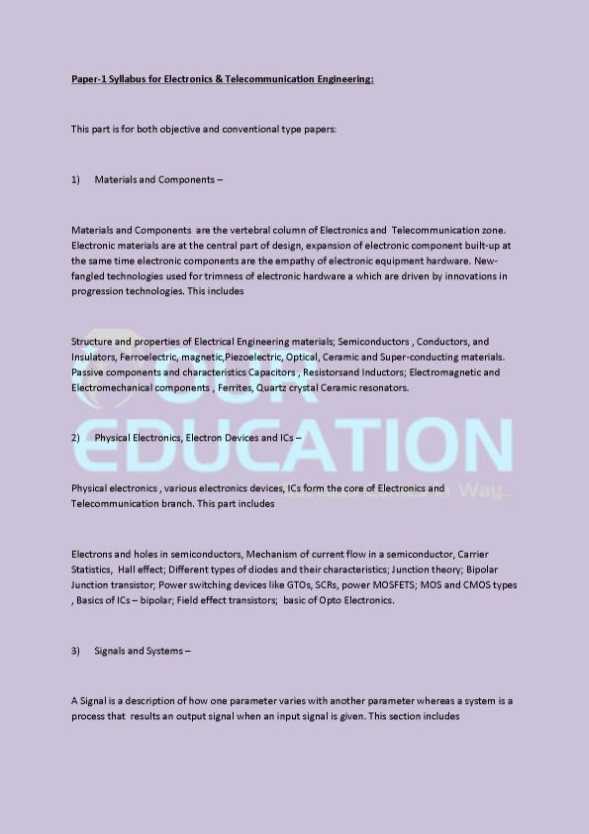 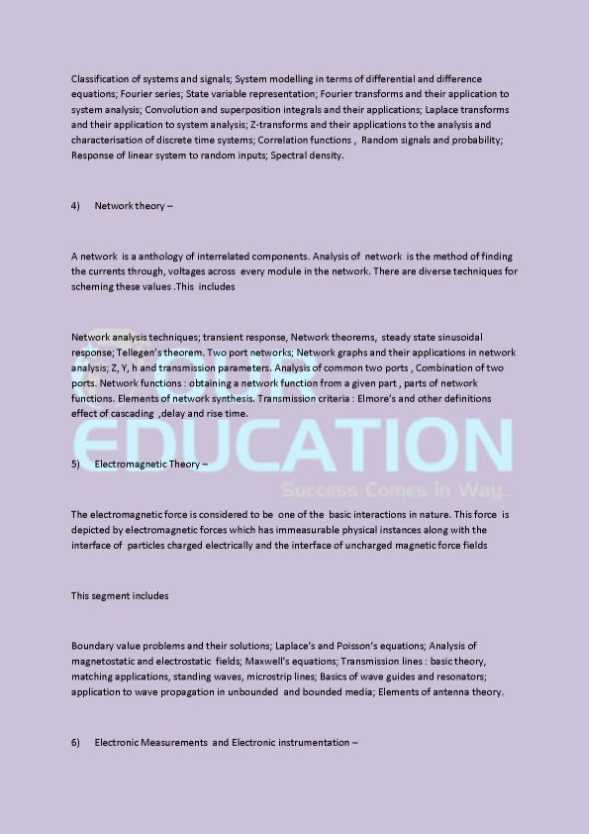 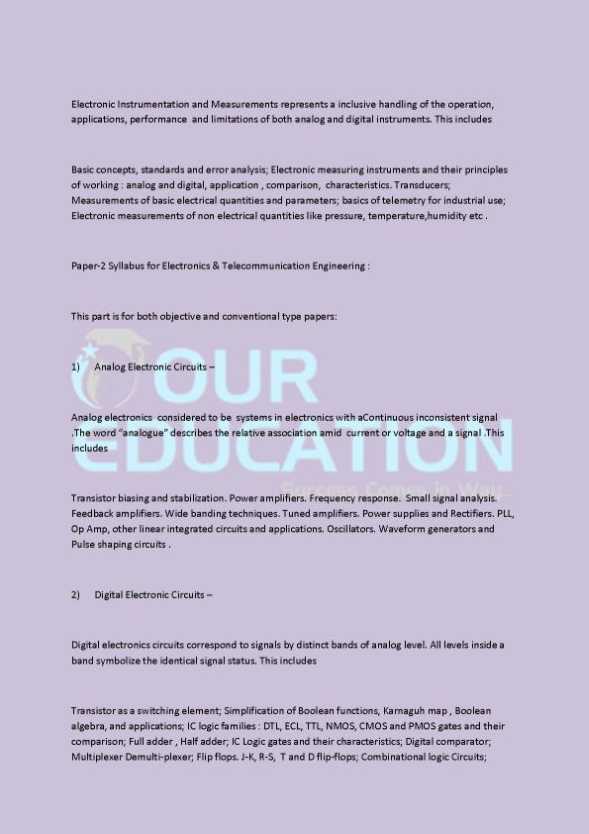 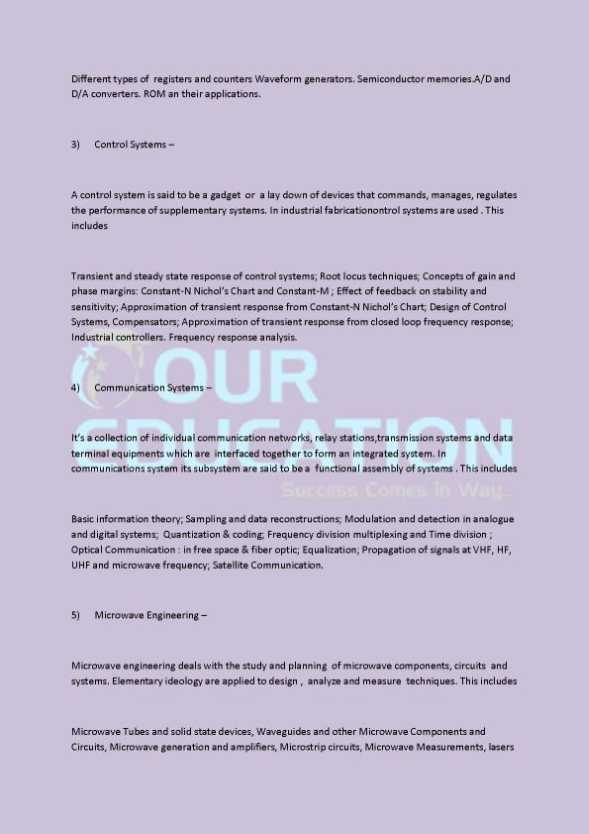 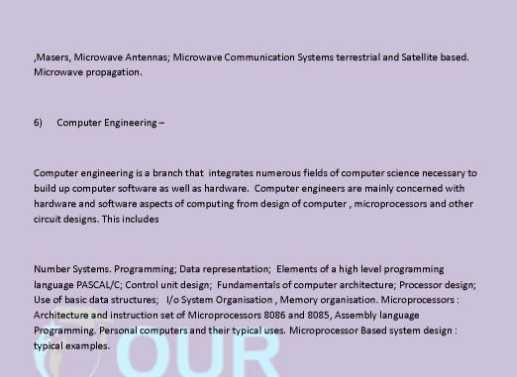 IES Electronics and Communication Engineering Reference Books: 1. Electronic Devices and Circuits & Analog Electronics - (i) Integrated electronics : Analog and Digital Circuit and system - Jacob Millman Halkias (ii) Microelectronic Circuits - Sedra & Smith (iii) Electronic Devices and Circuits - J.B. Gupta (iv) OP Amp and linear Integrated Circuit - Ramakant A. Gayakwad (v) Solid State electronic devices - Streetman and Banerjee (vi) Semiconductor devices - S.M.Sze 2. Communication Systems (i) Communication System - Simon Haykins (ii) An introduction to Analog and Digital Communication - Simon Haykins (iii) Communication System : Analog and Digital - Singh and Sapre (iv) Modern Digital and Analog Communication System - B.P. Lathi (v) Electronic Communication System - Kennedy and Davis 3. Signal and System - Oppenheim and Willsky 4. Optical Fiber Communication - Senior 5. Satellite Communications - Pratt and Bostian 6. Monochrome and colour - R.R. Gulati 7. Control System (i) Control System Engineering - I.G. Nagrath and M.Gopal (ii) Automatic Control System - B.C. Kuo (iii) Linear Control System - B.S. Manke 8. Electro Magnetic Theory (i) Elements of Engineering Electromagnetics - N. N. Rao (ii) Elements of Electromagnetics - Sadiku (iii) Engineering Electromagnetics - W.H.Hayt (iv) Antenna and Wave Propagation - K.D. Prasad 9. Digital Electronics (i) Digital Design - M. Morris Mano (ii) Digital Systems - Tocci & Widmer (iii) Modern Digital Electronics - R. P. Jain 10. Computer Engineering (i) Microprocessor Architecture, Programming & Application - Ramesh S. Gaonkar (ii) Computer Organization and Structure - Stalling 11. Microwave Engineering (i) Microwave Devices and Circuits - Liao (ii) Microwave Engineering - Sanjeev Gupta (iii) Microwave Engineering - Pozar 12. Network Theory (i) Networks and Systems - D. Roy Chaudhary (ii) Engineering Circuit Analysis - Hayt 13. Measurement and Instrumentation (i) Electrical & Electronic Measurement and Instrumentation - A. K. Sahney (ii) Electronic Instrumentation - H.S. Kalsi
__________________ Answered By StudyChaCha Member |